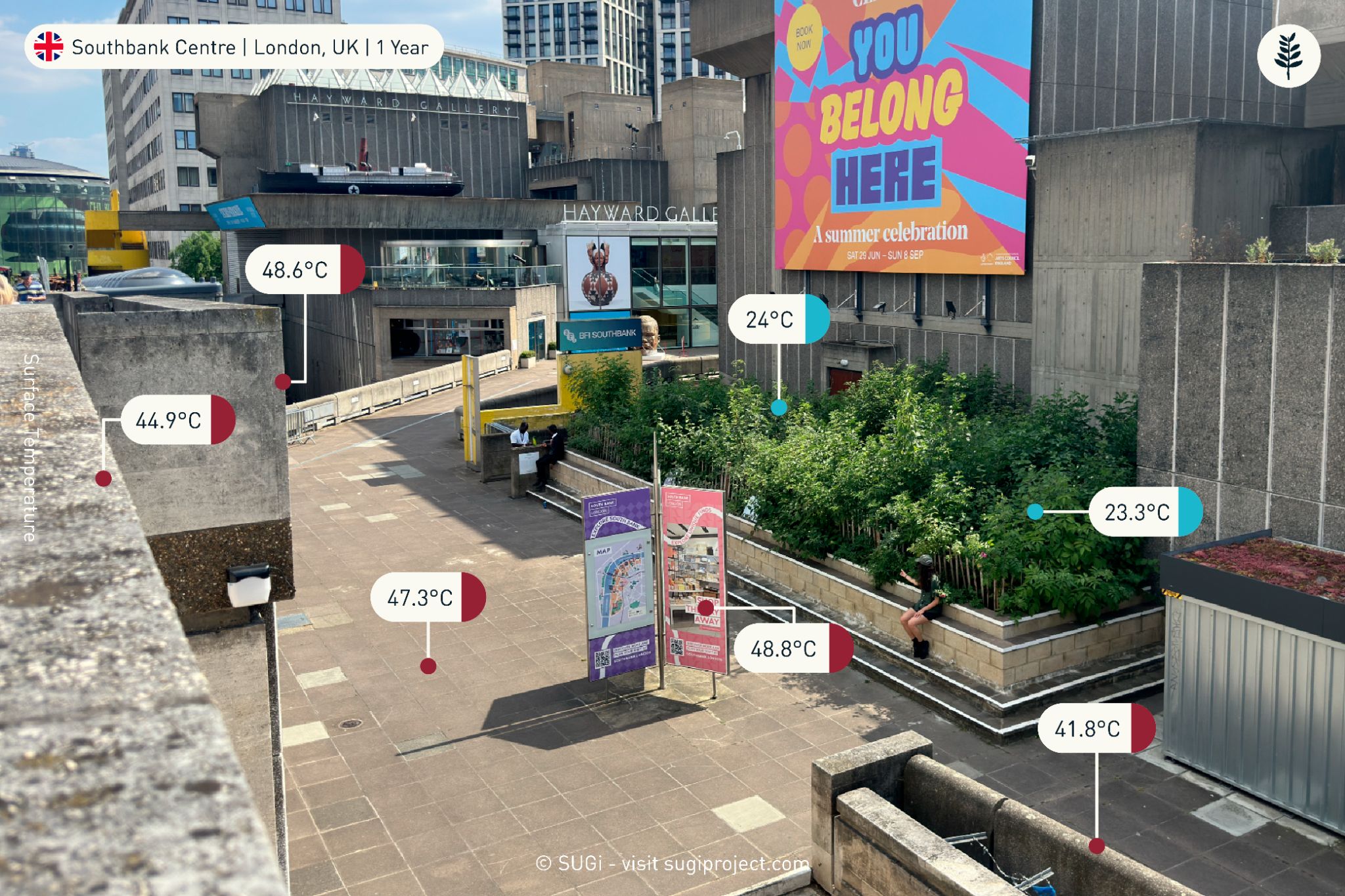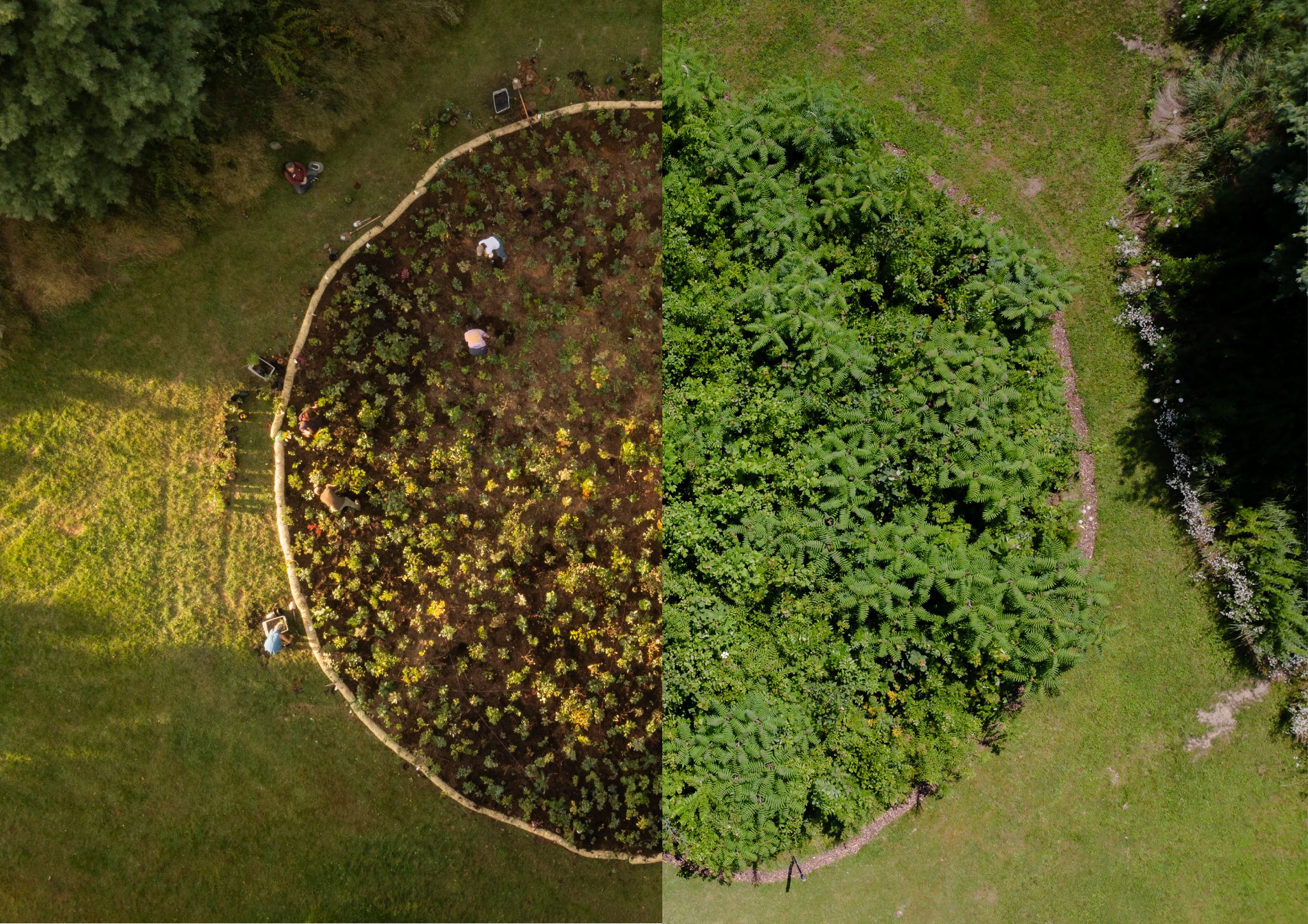SUGi: Making Room for Forests in Cities
30 de octubre de 2024,
by Aleenah Masud
Imagine walking from your city office straight into a lush pocket forest, the air filled with the scent of wildflowers and the sounds of birdsong. This is the future SUGi envisions—a world where cities aren’t just gray concrete, but vibrant ecosystems, in harmony with nature.
Image: Danehy Park Forest in Massachusetts, USA (Courtesy of SUGi)
Inspiring stories not only give us hope but also reveal possibilities we once thought were out of reach. In our recent conversation with Elise Van Middelem, founder and CEO of SUGi, we experienced just that. From Beirut to London, we journeyed through the transformative potential of pocket forests in urban spaces. Elise’s vision illuminates possibilities for restoring nature with pocket forests that can boost biodiversity, reduce urban heat, and create healthier environments for communities.
Using the proven Miyawaki Method, SUGi, along with Forest Makers - partners trained specifically in the Miyawaki method through SUGi fellowship - around the world, is transforming urban landscapes by creating green infrastructure. They plant ultra-dense, biodiverse forests of native species in urban areas to encourage the revival of depleted soils and ecosystems. These small but mighty pocket forests are part of SUGi’s threefold pledge: to restore biodiversity, reintroduce native species, and reconnect people with nature.
The Miyawaki Forests are a Game Changer
Born in Japan, The Miyawaki method is the brainchild of Akira Miyawaki. It is an afforestation technique that encourages tree communities to grow upward and share resources while developing a dense structure that restores biodiversity.
Miyawaki forests have an impressive survival rate of ±90%, compared to 20-30% survival rates of monoculture forests. These tiny forests can be planted in spaces as small as 3 square meters. After 2–3 years, they require little maintenance, grow ten times faster than monoculture forests, and are at least three times as dense*, supporting significantly more biodiversity.** Interestingly, they start rendering ecosystem services within decades - making them one of the most effective, and cost-effective ecological interventions possible.
SUGi’s First Miyawaki Forest in Beirut, Lebanon
Elise shared how the Beirut River, once the city’s largest open river, served as a vital water source for drinking and irrigation. In 1968, the river changed from a natural ecosystem to a canalized infrastructure. It became an open sewer for domestic and industrial wastewater that’s highly polluted and poses numerous health risks. Once a beloved social space for the community, the river also lost its recreational and social function.
In May 2019, SUGi with the local community planted its first pocket forest around the river, naming it Beirut's RiverLESS Forest. By planting these native pocket forests on urban landfill sites, they are actively reversing the deteriorating condition of the Beirut River. The local community has been and continues to be, involved in all phases of the forest-making process. Five years later, this forest is 100% self-sustaining and as a mature ecosystem, the forest is buzzing with life.

Image: BeirutRiverLESS forest in Beirut, Lebanon (Courtesy of SUGi)
Impact on Communities and Biodiversity
SUGi’s pocket forests serve as living laboratories, demonstrating the potential of small-scale green spaces in urban wastelands. The Miyawaki method is community-based and people-centered and can be used to reclaim and reimagine public space for the benefit of people and the planet. For SUGi founder Elise Van Middelem, it’s all about creating "pockets of hope." Launched in 2019, SUGi has created 220+ SUGi Pocket Forests in 53 cities and reconnected 76,723+ community members to nature.
Having SUGi pocket forests integrated into cities also supports the health and well-being of communities, protecting us from the impact of the climate crisis by preventing flooding and mitigating the ‘Urban Heat Island effect’.
SUGi Pocket Forests are Cooling Cities

Image: Heat map of the Southbank Centre - Natura Nostra Forest in London, UK (Courtesy of SUGi)
As urban heat continues to rise, the need for innovative solutions to create cooler, more resilient cities has never been more urgent. The image from the Southbank Centre in London shows the role of SUGi pocket forests in helping cool our cities. As global temperatures rise, these community-led forests present an effective solution to combat urban heat through the process of evapotranspiration and shading. The warmer it gets, the more the plants cool the surrounding air.
Restor x SUGi
"Each SUGi pocket forest empowers us to better understand the web of life and the interconnectedness of ecosystems. Restor’s intelligence amplifies these insights and illuminates how transformative even the smallest pocket forest — and all nature stewards globally — can be to climate resilience and biodiversity."
— Elise Van Middelem, Founder & CEO of SUGi

Image: Car Park Forest in Mechelen, Belgium (Courtesy of SUGi)
Restor and SUGi embody a profound symbiosis in their efforts to protect and restore ecosystems. Restor welcomed SUGi in 2023 and has to date integrated polygons for 219 sites present across 24 countries. Using the platform, SUGi can track and analyze the environmental impact of each site, from biodiversity improvements to carbon sequestration leveraging scientific data. By mapping their sites on Restor, SUGi is enhancing ecological transparency, enabling anyone to explore their work and see their progress.
This partnership also highlights the potential of technology that enables grassroots conservation projects like SUGi to map their work, join a global restoration community, and access scientific data. At Restor, we are honoured to share SUGi's story with you - showcasing the incredible impact when we give nature the space to thrive.
Link to SUGi profile on Restor
————————————————————————————————————————————————
*The density varies depending on the benchmark. While some monoculture forests plant 1 tree per square meter, we plant at least 3 plants per square meter.
**The science of 'quantifying biodiversity' is still in its early stages, and the claim of 100x more biodiversity is somewhat exaggerated. However, we can confidently state that Miyawaki forests are healthier than monocultures and just as supportive of biodiversity as ancient, or primordial, forests.

Written by Aleenah Masud
Published in
Community stories
on
30 de octubre de 2024
Support Restor’s Mission
Stories like these give us tremendous hope. Restor has hundreds of nature conservation projects that you can read about and support. If you like what you read, support Restor’s global efforts to protect and restore nature for the benefit of people, biodiversity, and climate. Our thanks to you!


